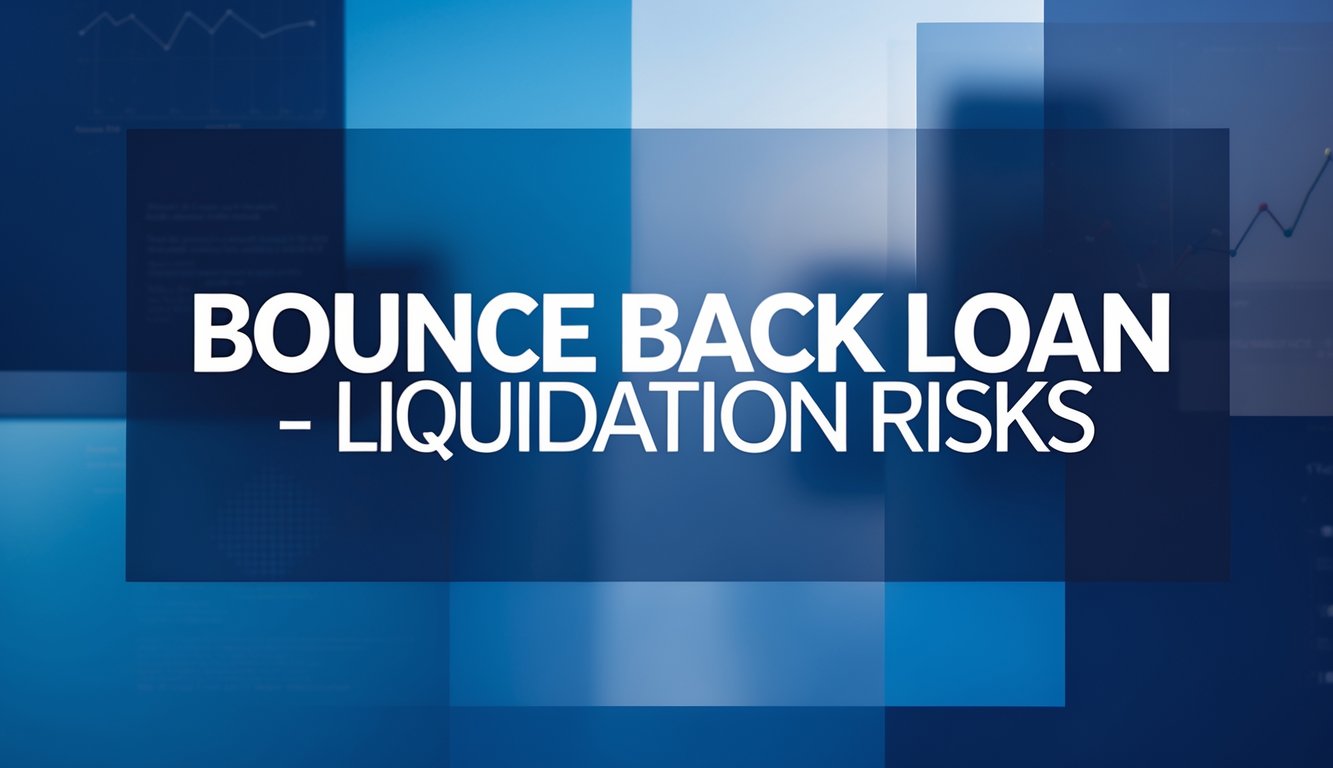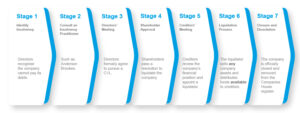
Bounce Back Loan Liquidation: Options, Risks & Your Next Steps
For many UK business owners, the financial impact of the COVID-19 pandemic has led to difficult decisions regarding Bounce Back Loans (BBLs). If your business is struggling to repay its BBL and considering closure, understanding your liquidation options and the risks involved is crucial. Here, we explore the best options for closing a company with a BBL and provide expert guidance on navigating the liquidation process.
What is Bounce Back Loan Liquidation?
Bounce Back Loan liquidation refers to the process of closing a company with outstanding BBL debt through Creditors’ Voluntary Liquidation (CVL). This formal insolvency procedure allows directors to close their company legally while ensuring that creditors, including the BBL lender, are treated fairly.
While BBLs are government-backed loans, businesses facing insolvency can liquidate their company, allowing the loan to be handled appropriately. In most cases, the remaining debt is written off, and directors are not personally liable, provided there has been no misuse of funds or fraudulent activity.
Free Consultation – advice@andersonbrookes.co.uk or call on 0800 1804 933 our freephone number (including from mobiles).
Can I Liquidate My Company With an Outstanding Bounce Back Loan?
Yes, it is possible to liquidate a company with a Bounce Back Loan. CVL is the legal route for businesses that can no longer repay their debts. The key point to remember is that dissolving a company with outstanding debts, including BBLs, is not an option. Dissolution is only suitable for companies with no debts or liabilities.
If you are struggling with BBL repayments, a CVL can help you close your company in an orderly manner and ensure compliance with insolvency laws. During the liquidation process, the appointed Insolvency Practitioner (IP) will assess the company’s financial position, sell assets, and distribute proceeds to creditors in the correct order.
Learn more about the BBL liquidation process here.
What Happens to the Bounce Back Loan During Liquidation?
When a company enters liquidation, its BBL is treated as an unsecured debt. The liquidation process prioritises creditors, with secured creditors being paid first, followed by preferential creditors, and finally unsecured creditors, including the BBL lender.
In many cases, there will not be enough assets to fully repay the BBL. The remaining debt is claimed against the government guarantee backing the loan. Once liquidation is complete, the BBL debt is typically written off, leaving directors free from further liability, provided there has been no misconduct.
Risks of Mismanaging Bounce Back Loans
While liquidation is the best route for companies struggling with BBL debt, mismanagement of the loan can lead to serious consequences. Directors must be careful about how the loan was spent. Misusing BBL funds for personal expenses or non-business purposes could result in personal liability, disqualification, or even criminal charges for fraud.
If it is found that the BBL funds were misused, directors could be held liable for the debt, face disqualification for up to 15 years, and in some cases, face criminal prosecution. Therefore, it is essential to consult with an Insolvency Practitioner to ensure that your company’s closure is handled correctly.
Can Directors Be Held Personally Liable for the Bounce Back Loan?
In the majority of cases, directors will not be personally liable for the Bounce Back Loan as these loans did not require a personal guarantee. However, directors must demonstrate that the BBL was used for legitimate business purposes.
If the BBL funds were misused, or if there is evidence of wrongful trading, where the director knew the company was insolvent and continued trading, the Insolvency Service can hold the director personally accountable. This is a critical reason why working with a licensed Insolvency Practitioner is essential during the liquidation process.
How to Liquidate a Company with BBL Debt
The steps for liquidating a company with BBL debt are as follows:
-
Consult a licensed Insolvency Practitioner (IP) – The IP will assess your company’s financial health and determine whether liquidation is the appropriate option. They will also advise on the BBL usage to ensure that no risks arise from potential misuse.
-
Formally initiate CVL – Once you’ve decided to liquidate, a shareholders’ resolution will be passed, and the IP will be appointed. The IP takes control of the company and begins the process of realising assets.
-
Sell assets and pay creditors – The liquidator will sell the company’s assets and distribute the funds to creditors, including the BBL lender, according to their priority.
-
Completion of the liquidation – Once the process is complete, the company is formally closed, and any remaining BBL debt is written off.
Voluntary Liquidation Process Example – BBL – 7 Steps

What Are the Alternative Options to Liquidation?
If your company is not yet insolvent, or if you believe it can be saved, there are alternative options to liquidation. For instance, a Company Voluntary Arrangement (CVA) may allow your business to continue operating while restructuring its debts. Additionally, the Pay As You Grow scheme offers extended repayment terms and payment holidays for businesses struggling with BBL repayments.
However, if your company is truly insolvent and cannot repay its debts, CVL is often the most appropriate solution. This provides a structured way to close your business and move forward with minimal personal risk.

How Anderson Brookes Can Help
At Anderson Brookes, we specialise in assisting directors through the complex process of closing a company with a Bounce Back Loan. Our experienced Insolvency Practitioners will guide you through every step of the CVL process, ensuring compliance with all legal requirements and protecting your personal interests.
We also help with director redundancy claims, ensuring you receive the support you are entitled to during the liquidation process.
Free Consultation – advice@andersonbrookes.co.uk or call on 0800 1804 933 our freephone number (including from mobiles).
BBL Liquidation – Google Reviews

&

